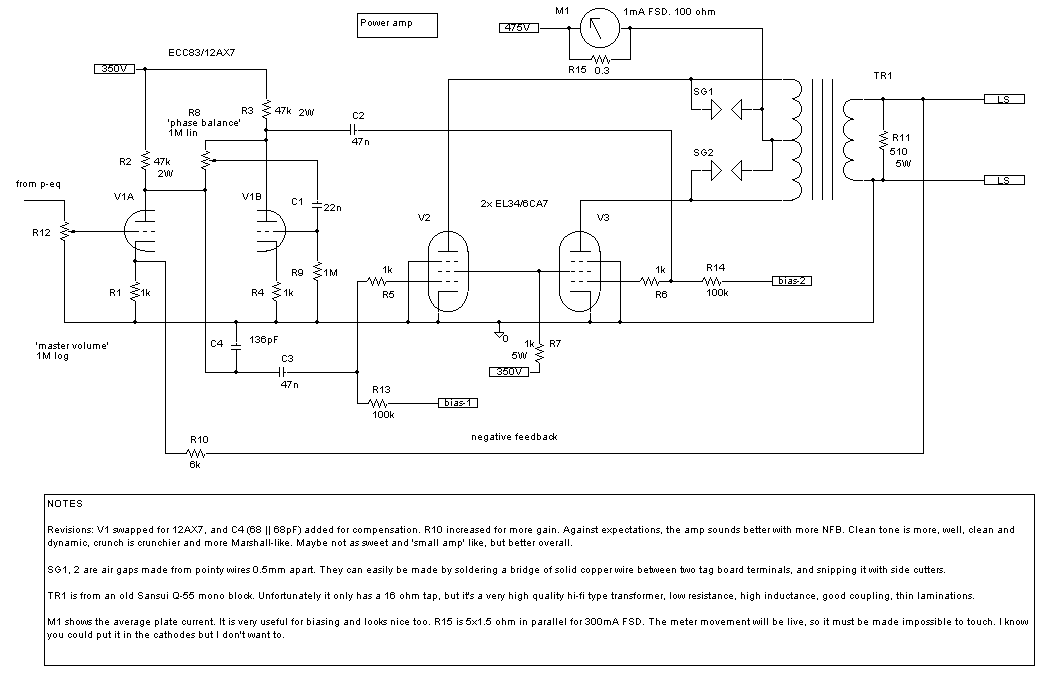
I started with the conventional cathode-coupled phase splitter, and no NFB. As an experiment, I used a low-gain 12AU7 tube. This gave an open-loop gain of 10. However, the sound wasn't very good - the bass was flubby and there was a huge upper-mids resonance which made the amp seem a lot noisier than it is. I reckoned the poor sound was caused by the output impedance being too high. Now this could be fixed in a few ways - ultra-linear, triode mode, or good old negative feedback. I went for NFB since it didn't involve reducing the HT and losing half the power.
When applying NFB to the phase splitter, the phases became seriously unbalanced. One disappeared altogether. I reckoned this was due to the low gain of the 12AU7. Since I wanted to experiment with this tube, I changed to another phase splitter circuit which allowed the phase balance to be trimmed. Applying NFB to this improved the sound, but now the power amp had too little gain and wouldn't go loud enough. If I reduced the NFB it went flubby again. I needed more open-loop gain.
So, I just stuck a spare 12AX7 in the socket. The anode load is a bit low for maximum gain, but the cathode current and anode dissipation are OK. When I did this, the clean tone became sweeter-sounding and more powerful, and the crunch got harder, more musical and less mushy. Overall the improvement in sound was remarkable. So were the high-frequency oscillations. These were fixed by adding a compensation capacitor.
This wasn't the outcome I expected. Audiophiles always bang on about feedback being evil, so I assumed my amp would sound better without it. However, they usually use low-impedance triodes. In a pentode amp, the extra damping from lowered output impedance probably improves the tone more than the other 'evils of feedback' detract from it. Or something.
